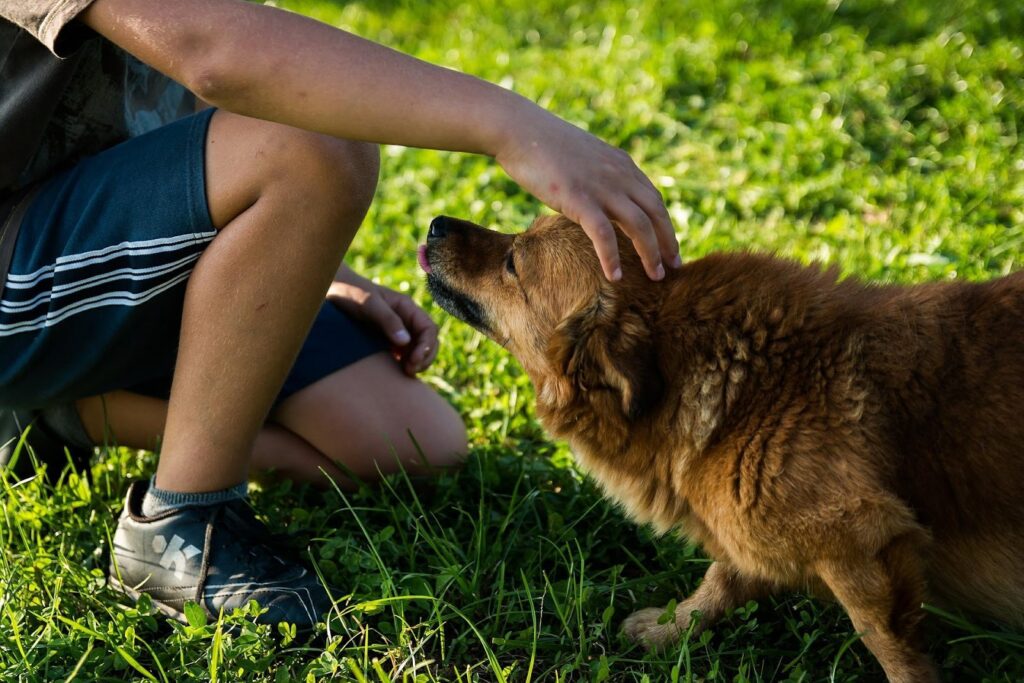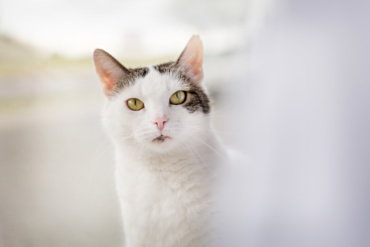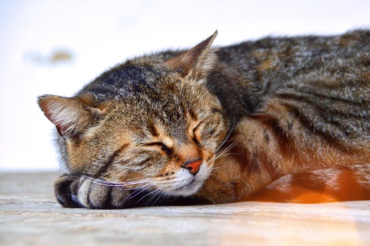Just because your puppy can’t speak English, doesn’t mean he or she can’t communicate! There are plenty of ways dogs “talk” to us, from their expressions to their behavior. If you’re a new pet owner, it may be a while before you can accurately read your pup’s body language. But before too long, as your relationship grows, so will your understanding.
It’s important to understand what your dog is trying to “say” for many reasons. After all, your dog might be trying to tell you something critical, like the fact that they’re feeling anxious or scared or sick. Also, strengthening the bond between you and your pup also makes it easier to train out undesired behaviors and teach them new tricks.
Body Language in Dogs: A Breakdown
Some aspects of your puppy’s body language might be obvious, like a frisky play bow or nervous growl. But other signs are a little more subtle.
Here is a head-to-tail breakdown of what your dog’s body language is trying to tell you.
The Ears
Your dog’s ears are for more than hearing! Looking at a dog’s ears is a great way to figure out how they’re feeling. If your dog’s ears are perky, that means they’re alert. This could mean they’re in an extra playful mood, or maybe they’ve recently noticed an unfamiliar neighbor walking in front of your house.
When dogs feel nervous or threatened, their ears will flatten against their head. The flatter the ears, the more scared your dog is feeling. Even though the shape and look of a puppy’s ears differ from breed to breed, pinning their ears back is usually a sign of anxiety, nerves, or anger.
And then there’s the “in-between” stage. If your puppy’s ears are relaxed and flopping around, you can assume your dog is feeling very comfortable.

The Eyes
We all know it’s hard not to get lost in those puppy dog eyes! But what exactly can you learn from studying your puppy’s eyes? When dogs feel alert or even aggressive, their eyes will grow wider and the pupils might even dilate. If your dog’s eyes are looking squinty, on the other hand, they’re probably feeling happy.
Sometimes, your puppy might even show the whites of their eyes—picture a “side eye” glance. If this happens, your dog is probably feeling very distressed.
In addition to looking at the shape of your puppy’s eyes, you should think about how you approach eye contact too. Just like with most humans, regular eye contact helps build trust. Looking into someone’s eyes when they’re speaking can signify respect and show the speaker you are listening. Don’t overdo it with your dog, though. Your puppy will appreciate some eye contact, but keep in mind that for some dogs, extended eye contact—especially if you’re not drinking—can come off as threatening. This might make your dog feel uneasy or even aggressive.
The Mouth
The most obvious way to learn what your dog is thinking is to listen to their voice. Growling typically signifies aggression or fear. If your dog starts whining, he or she probably wants something—either treats, attention, or a potty break.
And then there’s barking! Determining what your dog’s bark means usually isn’t difficult. Low and loud barks, which usually sound mean, mean your dog is feeling aggressive or threatened. Short, high-pitched barks can be a sign of a frisky or playful mood.
In addition to listening to the noises your puppy makes with their mouth, you can also look at how many teeth are showing. If your dog is casually showing off a few teeth (think of a puppy smile!), they’re probably feeling happy and relaxed. If your dog is baring ALL of their teeth, however, they might be feeling quite threatened.

The Back
Have you ever heard someone say that a dog’s hackles are raised? This phrase means the fur on a dog’s back is standing up. This happens when a canine feels particularly scared, stressed, or angry. It’s more noticeable on short-haired dogs, but most dogs show this behavior when they feel uneasy.
Pay attention if you see your puppy’s hackles raised. That telltale line of fur down their back might be telling you that a stranger is approaching, or that your dog saw an unfamiliar animal in the yard.
The Tail
It’s easy to assume that a wagging tail signifies a happy dog. But did you know this isn’t always the case? Your puppy might also wag their tail if they’re feeling uncomfortable or scared.
To figure out if what you’re seeing is a nervous or happy wag, look at the speed and direction of your puppy’s tail. If your dog’s tail is moving slowly or pointing toward the ground, your pup probably feels scared. If the tail is perky, moving quickly, and pointing toward the ceiling, that’s usually a sign of a happy or playful mood.
Look at the Whole Picture
Of course, you can’t just look at one individual body part and assume you know exactly what your puppy is thinking. To really understand what kind of mood they’re in, put all of the individual cues together and consider the environment your dog is in. Are they at home or somewhere new? Are there new people or animals around?
By taking into consideration your dog’s body language and all of the surrounding context clues, it will be easy to determine when your dog needs something from you.
What could be causing your dog to feel uneasy? In social situations, such as walking in a public park, your dog might feel put off by the behavior of other people or animals. Your puppy might also try to tell you when they’re feeling sick or uncomfortable. Common ailments in puppies, from flea bites to heartworm disease, usually result in unusual behaviors or side effects that pet owners may pick up on.
The more you pay attention, the better equipped you’ll be to help your puppy stay safe, happy, and healthy.








